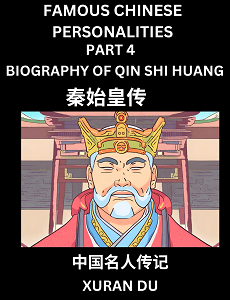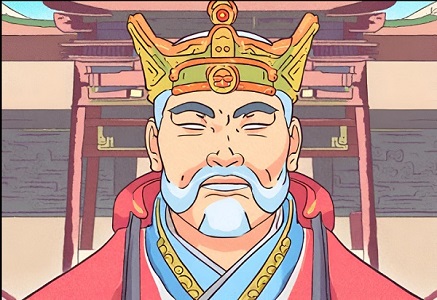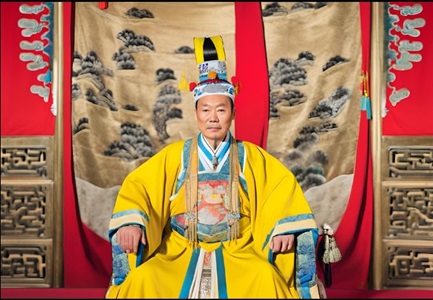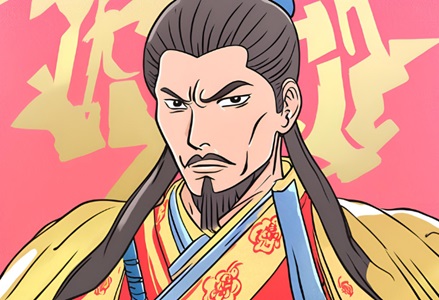Title of Biography in Chinese, Pinyin: 秦始皇传 (Qínshǐhuáng Zhuàn).

Title of Biography in English: The Biography of Qin Shi Huang.
Check out books on my Amazon and Barnes & Noble homepages as well as the following pages to learn Biographies of famous Chinese personalities-
- Part 1 – Chinese Biography Book Series for Beginners
- Part 2 – Chinese Biography Book Series for Beginners
- Part 3 – Chinese Biography Book Series for Beginners

The Biography of Qin Shi Huang in English (英文传记)
Qin Shi Huang: Unifying Six Kingdoms, Creating a Thousand-Year Legacy
Qin Shi Huang, known as Zheng, the son of Qin Zhuangxiang Wang, was born in Handan, the capital of the Zhao Kingdom. He was intelligent and ambitious from a young age, harboring the dream of unifying the land under one rule. After years of political struggle and military expansion, Qin Shi Huang finally achieved the unification of the six kingdoms in 221 BC, founding the Qin Dynasty, the first centralized feudal dynasty in Chinese history.

During his reign, Qin Shi Huang implemented a series of reforms, such as unifying weights and measures, currencies, writing systems, and laws, strengthening centralized power and consolidating his rule. He also built the Great Wall to defend against invasions from nomadic tribes in the north. However, Qin Shi Huang was also obsessed with seeking immortality and took excessive amounts of elixirs, ultimately leading to his death.
The life of Qin Shi Huang is filled with legend, his achievements and failures coexisting. He ushered in the first era of unity in Chinese history, laying the foundation for China’s feudal system for over two thousand years, earning him the title of “the first emperor in history.” However, his tyranny and extravagance also sparked discontent and rebellion among the people, setting the stage for the rapid decline and fall of the Qin Dynasty.
Learn Biography Of Qin Shi Huang in Chinese (秦始皇的详细传记)

秦始皇,名政,秦庄襄王之子,出生于赵国都城邯郸。他自幼聪明过人,志向远大,有着一统天下的雄心壮志。经过多年的政治斗争和军事扩张,秦始皇终于在公元前221年完成了对六国的统一,建立了中国历史上第一个中央集权的封建王朝——秦朝。
秦始皇在位期间,推行了一系列改革措施,如统一度量衡、货币、文字和法律等,加强了中央集权,巩固了统治。他还修建了万里长城,以抵御北方游牧民族的侵扰。此外,秦始皇还热衷于求仙问道,寻求长生不老之术,最终因服用过量丹药而病逝。
秦始皇的一生充满了传奇色彩,他的功绩与过失并存。他开创了中国历史上第一个大一统的时代,奠定了中国两千多年封建制度的基础,被誉为“千古一帝”。然而,他的暴政和奢侈也引起了人民的不满和反抗,为秦朝的快速灭亡埋下了伏笔。
Qin Shi Huang Biography Keywords- English, Chinese & Pinyin (关键词)

- 秦始皇(Qínshǐhuáng, Qin Shi Huang): The first emperor of China’s Qin Dynasty, known for unifying the Warring States period into the first centralized Chinese dynasty.
- 一统六国(Yītǒng liù guó, Unifying Six Kingdoms): The act of Qin Shi Huang conquering and unifying the six warring kingdoms of China into a single empire.
- 千秋伟业(Qiānqiū wěiyè, Thousand-Year Legacy): The significant and lasting achievements of Qin Shi Huang’s reign, which laid the foundation for China’s feudal system for over two thousand years.
Pinyin of Qin Shi Huang Biography (秦始皇传记的拼音)
Qínshǐhuáng, míng zhèng, qínzhuāngxiāng wáng zhīzǐ, chūshēng yú zhào guó dūchéng hándān. Tā zì yòu cōngmíngguò rén, zhìxiàng yuǎndà, yǒuzhe yītǒng tiānxià de xióngxīn zhuàngzhì. Jīngguò duōnián de zhèngzhì dòuzhēng hé jūnshì kuòzhāng, qínshǐhuáng zhōngyú zài gōngyuán qián 221 nián wánchéngle duì liù guó de tǒngyī, jiànlìle zhōngguó lìshǐ shàng dì yī gè zhōngyāng jíquán de fēngjiàn wángcháo——qín cháo.

Qínshǐhuáng zài wèi qíjiān, tuīxíngle yī xìliè gǎigé cuòshī, rú tǒngyī dùliànghéng, huòbì, wénzì hé fǎlǜ děng, jiāqiángle zhōngyāng jíquán, gǒnggùle tǒngzhì. Tā hái xiūjiànle wànlǐ chángchéng, yǐ dǐyù běifāng yóumù mínzú de qīnrǎo. Cǐwài, qínshǐhuáng hái rèzhōng yú qiú xiān wèn dào, xúnqiú chángshēng bùlǎo zhī shù, zuìzhōng yīn fúyòng guòliàng dān yào ér bìngshì.
Qínshǐhuáng de yīshēng chōngmǎnle chuánqí sècǎi, tā de gōngjī yǔ guòshī bìngcún. Tā kāichuàngle zhōngguó lìshǐ shàng dì yī gè dà yītǒng de shídài, diàndìngle zhōngguó liǎng qiān duō nián fēngjiàn zhìdù de jīchǔ, bèi yù wèi “qiāngǔ yī dì”. Rán’ér, tā de bàozhèng hé shēchǐ yě yǐnqǐle rénmín de bùmǎn hé fǎnkàng, wéi qín cháo de kuàisù mièwáng mái xiàle fúbǐ.


